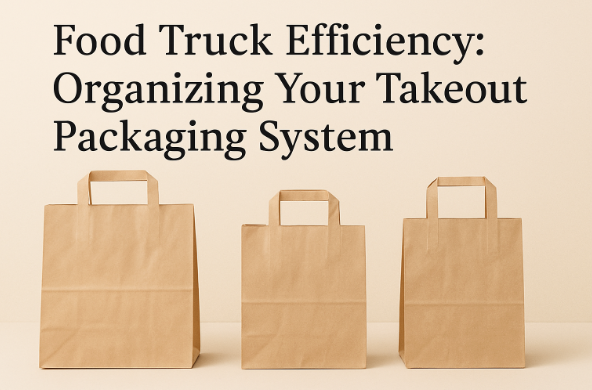Running a food truck is equal parts passion and precision. Every inch of space, every second of service, and every piece of packaging must work together seamlessly. Amid the rush of orders and limited workspace, packaging is often overlooked — yet it’s one of the most powerful tools for improving speed, food quality, and customer satisfaction.
A well-organized takeout packaging system doesn’t just make operations smoother; it keeps food fresher, lines shorter, and customers happier. One of the simplest yet most effective upgrades food truck owners can make is rethinking how they use brown paper bags — a classic choice that continues to prove its worth in the fast-paced world of mobile dining.
The Hidden Power of Simple Packaging
Paper bags may seem old-fashioned, but they have stood the test of time for good reason. They’re lightweight, biodegradable, and easy to stack and grab during busy rushes. Their natural, minimalist appearance also complements the handmade, street-side authenticity that food trucks are known for.
Brown paper bags are available in a variety of weights and sizes, from small lunch sacks to larger takeout carriers. Thicker kraft paper versions can easily support a full meal, including sides and bottled drinks, without tearing. Because they allow a little airflow, they help prevent fried items from becoming soggy — an issue that plagues many sealed plastic containers.
The key to making them work efficiently lies not just in choosing the right type, but in organizing how they are used within your daily workflow.
Designing a Smarter Workflow
Inside a food truck, space is precious. A well-designed packaging station can make or break your service flow. Bags should be positioned within easy reach of the service counter, ideally near the point where finished meals are assembled. Each bag size should have its designated slot or rack, allowing staff to grab the right one instantly without rummaging.
Organize your packing area so that movement follows a natural order: the finished food comes off the grill, moves to the assembly area, and then directly into its appropriate bag. Keep extras like napkins, cutlery, and condiments in one compact section to reduce the time spent searching. During peak hours, shaving even a few seconds off each order can mean serving dozens more customers without added stress.
Managing Food Quality on the Go
The main purpose of any packaging system is to preserve the integrity of the food. Greasy or saucy items should never be placed directly inside paper bags. A simple waxed liner or small box inside the bag can prevent leaks and maintain the food’s texture. Heavier meals should go in sturdier bags or those with reinforced bottoms, while lighter snacks and desserts fit well in smaller, flat-bottom options.
Weight distribution also matters. Items should be packed so that heavier containers sit at the base, while lighter or delicate items rest on top. This prevents squashing and helps maintain presentation, even after a bumpy ride to a nearby park or event.
Branding and Practical Presentation
Even if your food truck operates on a tight budget, packaging is an excellent chance to express your brand identity. A clean kraft paper bag printed with a simple logo or tagline feels authentic and professional. It tells the customer that you care about presentation without relying on flashy or wasteful materials.
That said, printing isn’t always necessary. Many brands opt for unprinted brown bags paired with branded stickers, stamps, or labels — a more flexible and affordable solution that still carries personality. Small touches like handwritten order numbers or customer names also make the experience feel personal and memorable.
Keeping It Sustainable and Cost-Efficient
Food truck owners often balance environmental responsibility with cost control. Brown paper bags strike that balance well. They’re recyclable, biodegradable, and widely available in bulk. Because they’re lightweight and stackable, they also save valuable storage space inside your truck.
Sustainability today isn’t just about doing good — it’s about building customer trust. Many diners actively prefer eco-conscious businesses, and using paper-based packaging can become a quiet but powerful part of your brand story.
Fine-Tuning Through Real Use
No system is perfect from day one. The most successful food truck operators test and refine their packaging routines constantly. They observe how staff interact with the bags, whether customers struggle to carry them, and how well they hold up during busy events. Feedback from both sides helps identify where improvements are needed — whether that’s upgrading to thicker bags, changing sizes, or reorganizing the prep area for faster flow.
Even small refinements can add up: fewer spills, fewer delays, and a smoother overall service rhythm.
Final Thoughts
Efficiency in a food truck isn’t only about speed — it’s about creating a cohesive, repeatable process that supports your food quality and brand image. Organizing your takeout packaging system with thoughtful use of brown paper bags can streamline service, reduce waste, and enhance your customers’ experience.


